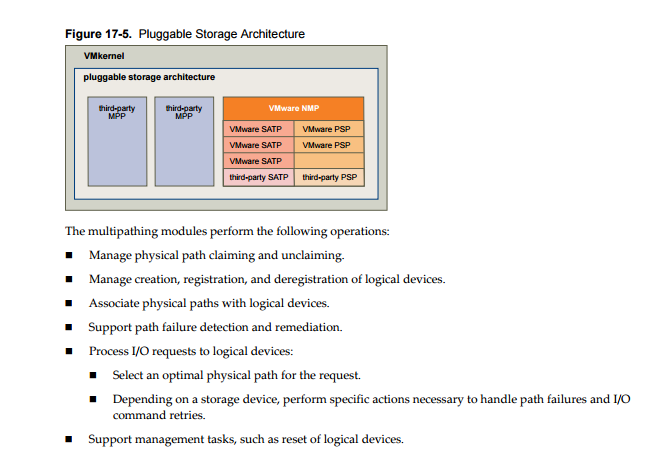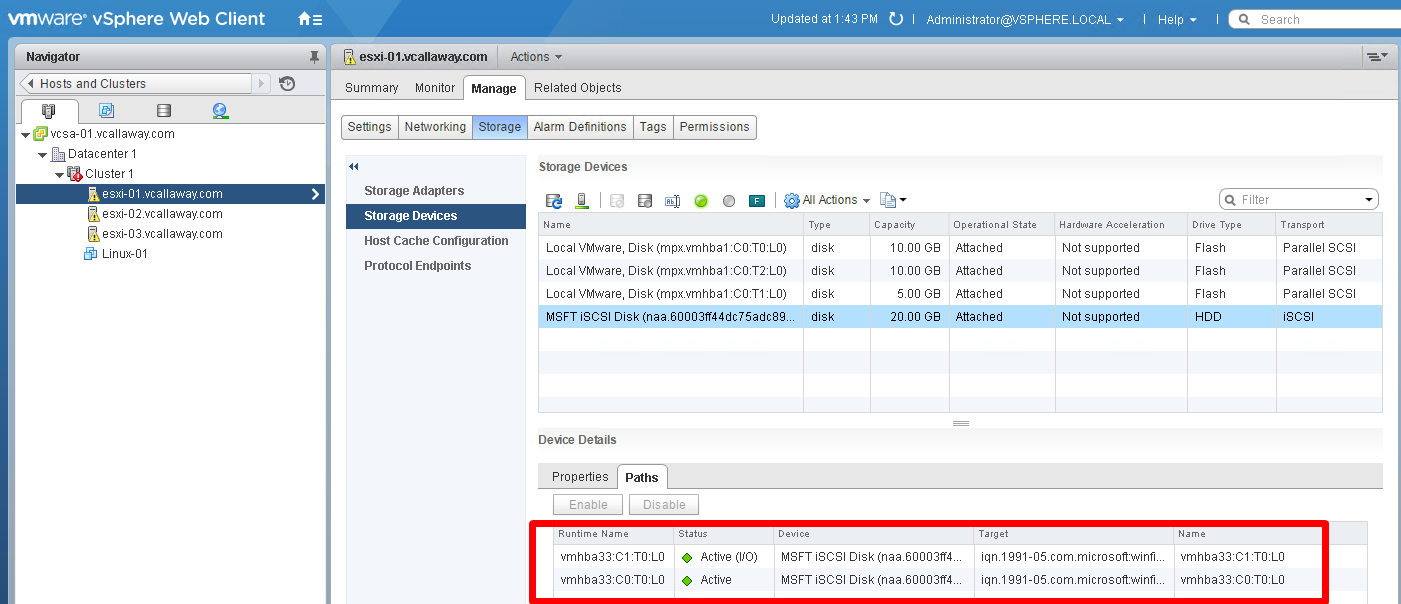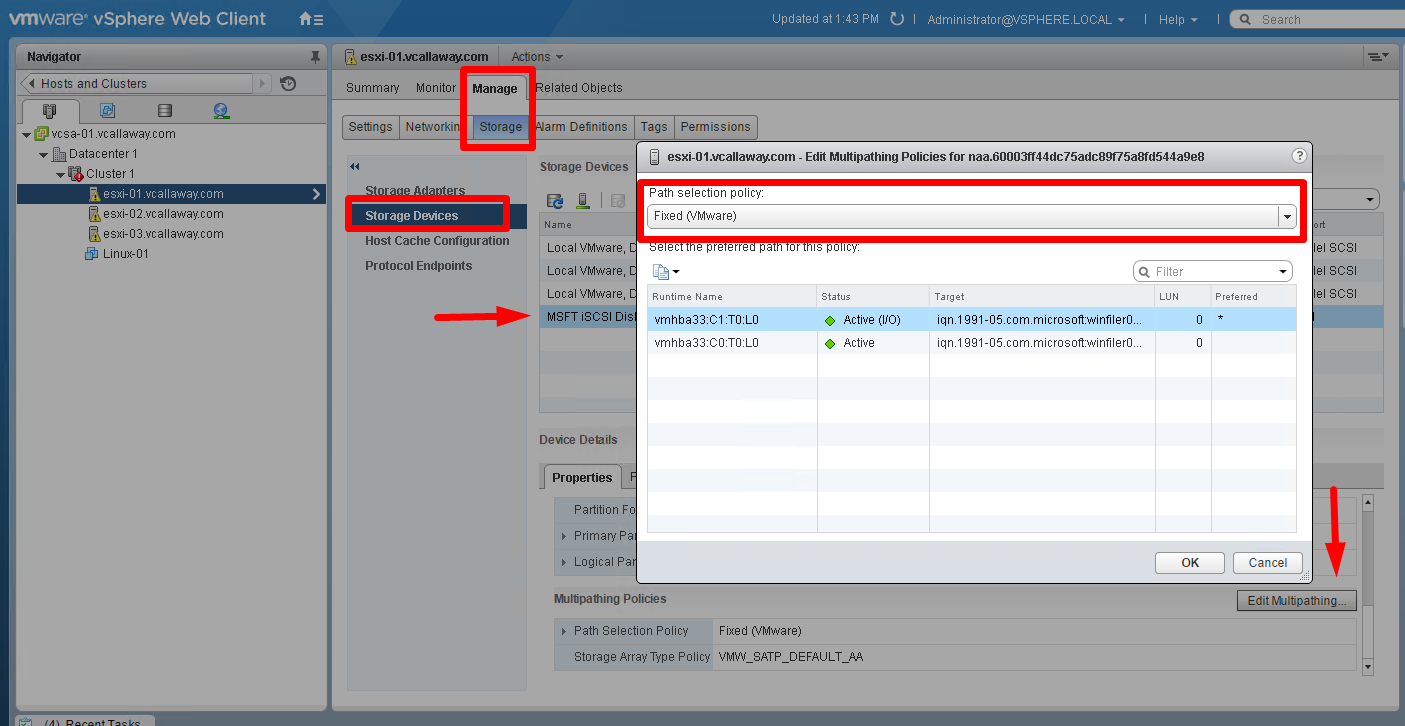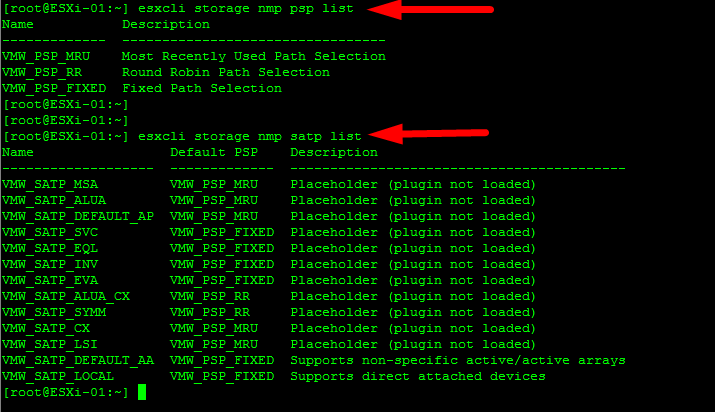To review previous objective, click HERE.
Objective Topics:
- Explain common multi-pathing components
- Differentiate APD and PDL states
- Given a scenario, compare and contrast Active Optimized vs. Active non-Optimized port group states
- Explain features of Pluggable Storage Architecture (PSA)
- Understand the effects of a given claim rule on multipathing and failover
- Explain the function of claim rule elements:
- Vendor
- Model
- Device ID
- SATP
- PSP
- Change the Path Selection Policy using the UI
- Determine required claim rule elements to change the default PSP
- Determine the effect of changing PSP on Multipathing and failover
- Determine the effects of changing SATP on relevant device behavior
- Configure/Manage Storage Load Balancing
- Differentiate available Storage Load Balancing options
- Differentiate available Storage Multi-pathing Policies
- Configure Storage Policies
- Locate failover events in the UI
Explain common multi-pathing components
Differentiate APD and PDL states
All Paths Down (APD)
- A datastore is shown as unavailable in the Storage View
- A storage adapter indicates the Operational State of the device is Lost Communication
- All paths to the device are marked as Dead
Permanent Device Loss (PDL)
- A datastore is shown as unavailable in the Storage view
- A storage adapter indicates the Operational State of the device as Dead or Error
- All paths to the device are marked as Dead
- You are unable to connect directly to the ESXi host using the vSphere Client
- The ESXi host shows as Disconnected in vCenter Server
Compare/contrast Active Optimized vs. Active non-Optimized port group states
- The default PSP for all VMW_SATP_ALUA is MRU (Most Recently Used)
- MRU selects the optimized path from the VMW_SATP_ALU first, if not then selects a non-optimized path for connectivity.
Explain features of Pluggable Storage Architecture (PSA)
- PSA – Pluggable Storage Architecture
- NMP – Native Multipathing Plug-in (VMware)
- MPP – Third-Party multipathing module (I.E. EMC, NetApp, Pure etc..)
NMP has 2 types:
- SATP – Storage Array Type Plugin. (Path Failover)
- PSP – Path Selection Plugin. (Path for device)
Polices:
- MRU – Most Recently Used. Default for Active-Passive storage arrays
- Fixed – Uses 1 static path, the first one it finds available. Default for Active-Active storage arrays.
- Round Robin (RR) – Uses path selection to rotate through all active paths. Only policy for load balancing.
To check via the CLI of a given host.
Locate failover events in the UI
Logs are located in /var/log/vmkernal.log.
To move onto Objective 3.4 click, HERE





